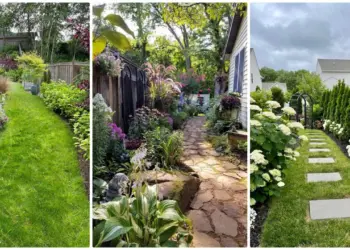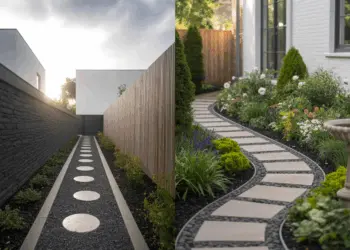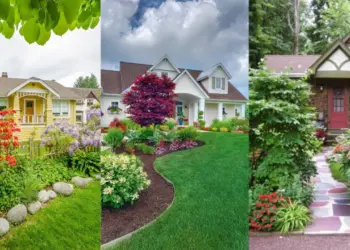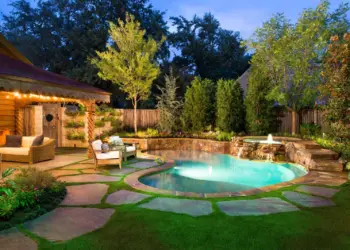When the weather starts to warm up, there’s nothing we crave more than spending time outside. There are many ways to make the most of your front or backyard, and that includes building a beautiful patio. Thinking of building a new patio? Having trouble finding your way through the different types of materials? You already have a patio and you want to redesign it?
Read the following article and get everything you need to know to have a dreamy patio.
Table of Contents
What is the origin of the patio?
The patio is an open-air interior courtyard, usually square in shape, whose origin dates back to Roman antiquity. It was called “the atrium”. In traditional Mediterranean architecture, in Spain and North Africa in particular, it is (and was) not uncommon for houses to have no windows facing the outside, and for all openings to be turned inwards… and thus towards the famous patio. It had a very important role, since it was in a way the one who lit the house and brought luminosity.
This central courtyard usually has a fountain or pool. The traditional patio is sometimes also decorated with columns and colored ceramic. It has a central place in the building but also in domestic life.

What does the patio look like in Western countries?
Unlike Spanish or North African houses, Western houses are usually turned towards the outside. The patio therefore has a different function: it takes the form of an intermediate living space between the interior of the house and the garden.
However, old houses and more and more contemporary houses have an interior courtyard that follows the Hispano-Moorish principle. In our colder regions, we do not hesitate to close the courtyard with a glass roof, thus creating a patio that can be enjoyed all year round, even during the colder seasons!
The life span of a patio usually depends on 2 main criteria: The choice of materials and the installation that follows the rules of the art. Durable construction and all environmental factors must be taken into account when choosing materials for your patio.
Before choosing a specific option, it’s important to consider a variety of factors to determine which material best meets your needs. We’ll go over some crucial questions as well as the pros and cons of different patio materials, so read on!
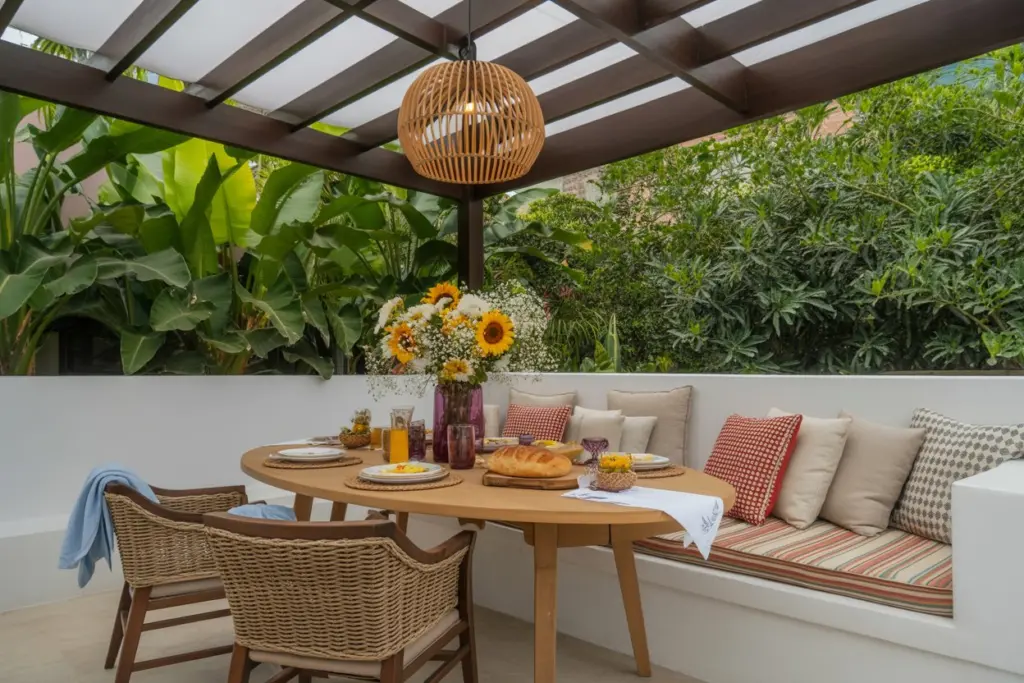
Start work on the patio construction
If you are at the beginning of your patio construction project, there are a few questions that can help you determine your specific needs as well as the safest construction methods for your project. Start by asking yourself the following questions:
- How much money are you willing to invest?
- Should you prioritize durability and lower maintenance materials?
- What are you looking for in terms of style?
- How will you use this surface?
Once you’ve answered these questions, you’ll have a better idea of what material will work best for your home, your family and your lifestyle. Also remember to do your research regarding city and municipal permits, as most exterior projects will need to adhere to building codes and will likely require a permit.
Now it’s time to take a closer look at the different types of materials available. We are sure that everyone will be able to find a material that suits their personal taste and budget. Here is a quick guide to help you learn more about the pros and cons of each.
Guide to materials for building a patio
Once our questions have been answered, it’s time to take a closer look at the types of materials available on the market. There is something for every budget and taste. Here is a short guide to better distinguish the advantages and disadvantages of each product.
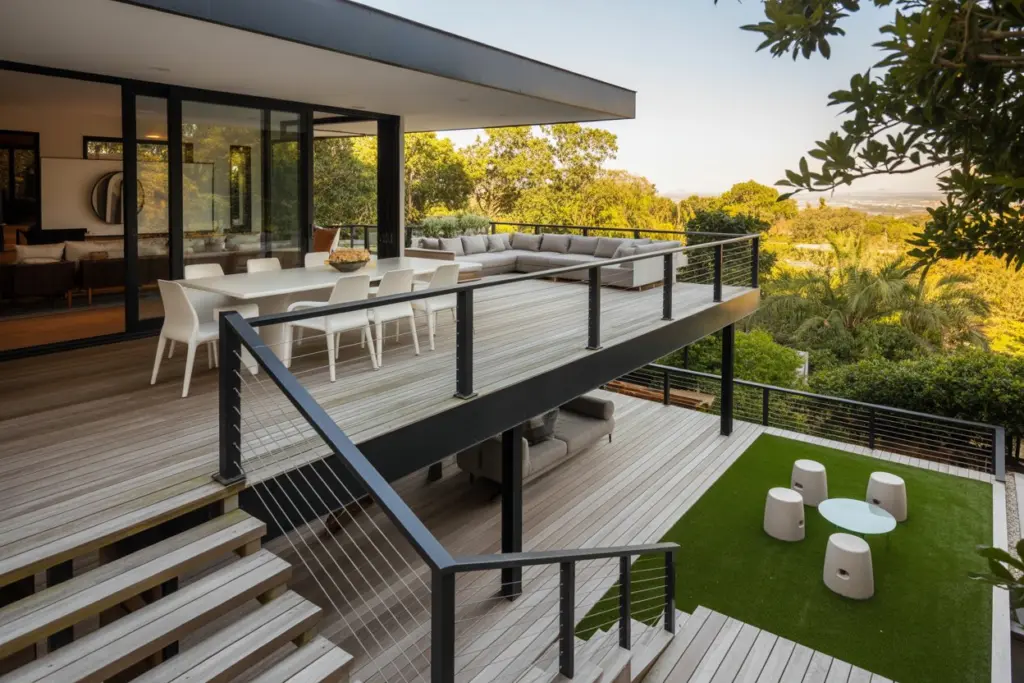
Treated wood
It is probably the most common material for building patios. Treated wood is popular because it is economical and versatile (it can be stained and painted as you like). However, the money saved at the time of purchase will be quickly recouped when it comes time to cover maintenance costs since treated wood patios must be refinished every three years.
Cedar
A wood that can be very beautiful when well maintained. It can be stained, but cannot be painted. Cedar produces fewer splinters than treated wood, but it must be treated on a regular basis (once a year) because it reacts poorly to the weather.
Torrefied wood
Unlike other types of wood, torrefied wood is not treated with chemicals. Instead, the manufacturing process involves prolonged exposure to heat and steam. The result is a very smooth material that is not susceptible to pest attack. On the other hand, since it is less dense than other materials, it is not recommended to use torrefied wood to build the patio structure. Price-wise, it is halfway between treated wood and Ipe.
Ipe wood
Ipe is a product that is becoming more and more popular. This type of wood is 5 times more durable than treated wood and is very easy to maintain. Moreover, it resists well to bad weather, a significant asset for homeowners in Quebec. Once installed, it does not require frequent treatment. If left to age naturally, it will turn gray. To retain the color of the wood, simply apply a coat of anti-UV oil.
Composite material
This type of material is made of a mixture of wood and recycled plastic. This combination of elements allows to take advantage of the qualities of both materials. However, it tends to get hot when temperatures rise and it cannot be painted. You have to choose from the colors offered by the manufacturer and once installed, you can’t change your mind. A good annual pressure washing will keep it nice and clean.
Fiberglass
Fiberglass balconies and patios are often found in condo buildings. It is a lightweight material that resists wear and tear and corrosion. Under the right conditions, this type of patio can last from 20 to 25 years. However, aesthetically, it is less attractive than some of the other options available.
Consider your patio accessories
Several parts and accessories are becoming essential when building a patio such as:
- The trellis ;
- Railings;
- The bars ;
- Post caps;
- The door;
- Beams;
- The joists ;
- The benches ;
- The table ;
- The chairs ;
- The cushions ;
- The light ;
- The barbecue;
Etc.
Make a detailed list of everything you will need so that you don’t forget anything, but above all, so that you can work with your budget and respect it. To achieve this, set priorities, the patio heater and the 4-burner barbecue can certainly wait a little…
Patio design ideas
The design of the patio must be well thought out to meet all your needs. You don’t need to invest a lot of money to achieve this.
Use leftover materials to create furniture
It is not uncommon to order extra materials when building a patio. If you have some left over, use it! There are a ton of small projects you can do that don’t require a lot of materials or time, depending on what you have left over. Also, if you’re short on wood planks, consider lattice. Much less expensive than planks, it creates an amazing effect.
Some ideas:
- Personalized benches
- Flower or herb boxes
- A small privacy wall
- A pergola

Decorate with nature
Because it is without a doubt THE most beautiful decoration and also the most practical. In addition to adding color, flowers and certain herbs have very special properties. In addition to enhancing your decor, you can use nature to its full potential!
Some ideas:
- Fine herbs (lavender) to repel insects like mosquitoes.
- A garden directly on the patio. Strawberries, cucumbers, beans, lettuce and tomatoes grow very well in a window box.
- Hanging branches to hang lights.
- Flower pots that you can bring inside in winter.
- Edible flowers to decorate your salads.
- Small potted trees to add lights.
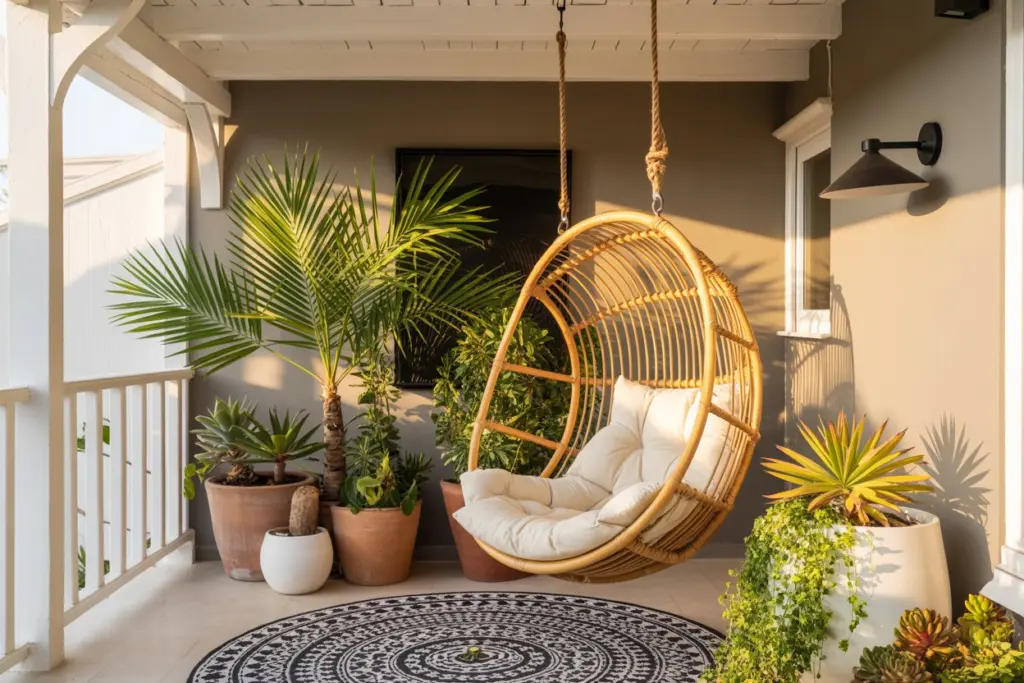
Reuse furniture and textiles
You have changed your furniture? Wondering what to do with that old furniture? They could be a great addition to your patio with these ideas.
Some ideas:
- Use chairs you already have at home to repaint them.
- Give a second life to old cushions by changing the covers.
- Strip a small coffee table to give it a new look.
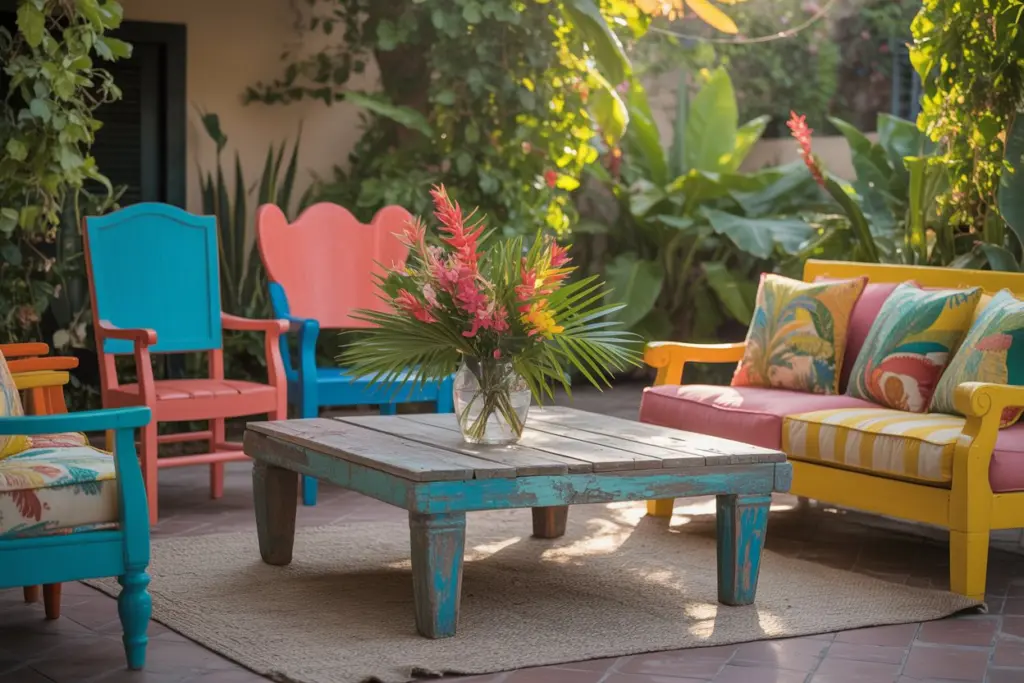
Make your table
Who says you need a table with matching chairs to set up your patio? You can create your own table. Not only will it be custom made for the space available, it will be unique.
Some ideas:
- Recycle materials like pallets or leftover wood.
- Assemble wooden boards.
- Use a picnic table or tables.
- Install a shelf instead of a table.

Create storage and accent furniture
To properly design your patio space, nothing beats storage. No matter where you are, you can never have enough. To create interesting and inexpensive storage, you can reuse old materials.
Some ideas:
- A custom-made shelf to hold decorations or plants.
- A central wooden table to store food.
- Storage for toys or gardening supplies.
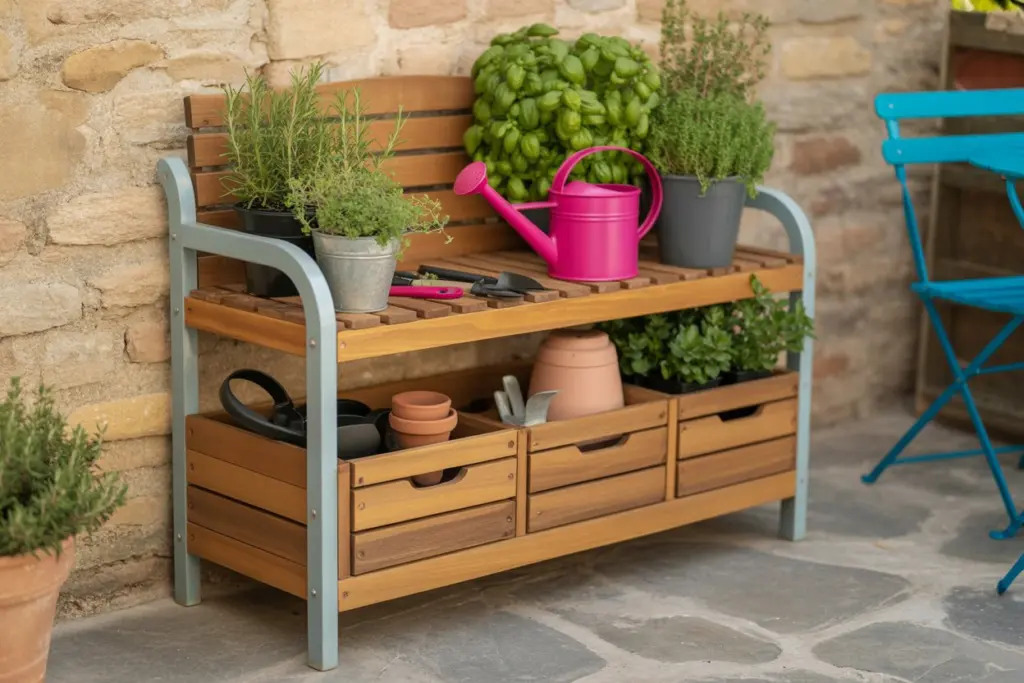
Invest thoughtfully
When it comes to designing a patio, it is important to think before investing in construction, staining and decoration. Think that some items will have to face the weather (cold, rain, sun). You will want to pay a little more for them to keep them for a long time. If you find an item too expensive to buy, divide its price by the number of years you expect to use it. You’ll be surprised at the cost!
Some ideas:
- Strong, durable furniture.
- Weather-resistant textiles.
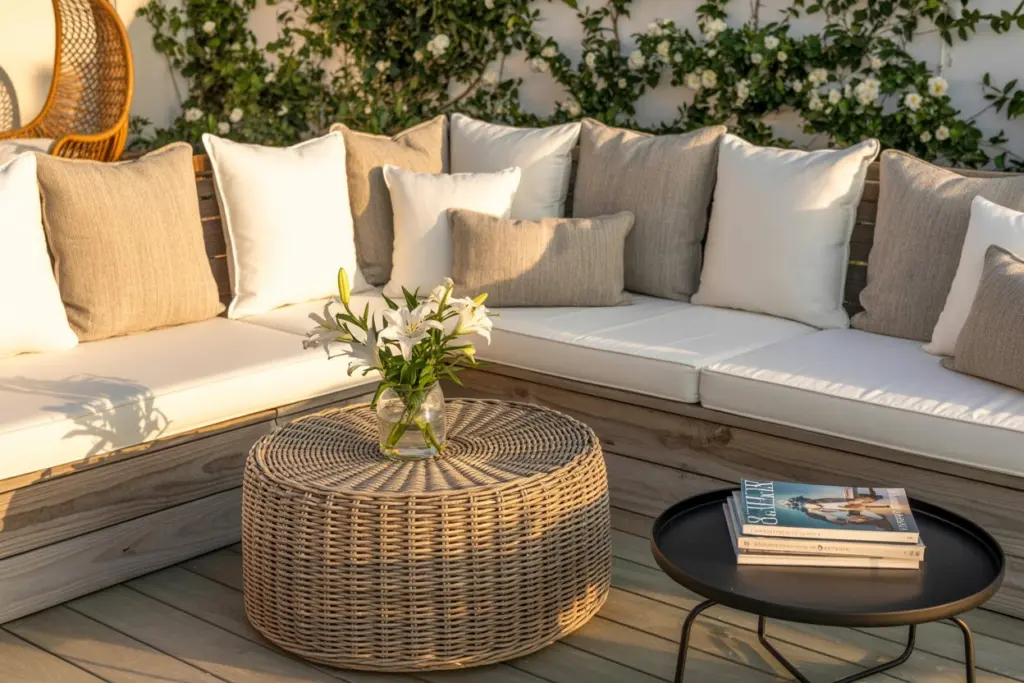
Add suspensions
Do you dream of basking in the sun in a hammock like on the beach? Swaying in the wind? Hangers are inexpensive options that not only add seating for your guests, but are also fun to use. If you have a pergola, you should install them in these areas. You will be able to enjoy it no matter the weather. You can also bring it in during bad weather to install them on your porch, if you have one.
Some ideas:
- Hammock
- Swing
- Hanging bed

Create custom lighting
Not every piece of land or outdoor landscaping is suitable for a home. Plus, the cost of these installations can be relatively high. As an alternative, add lanterns, candles and string lights to enhance the lighting. This will allow you to enjoy your patio design in the evening.
Some ideas:
- Place candles.
- Add lanterns.
- Hang strands of light.
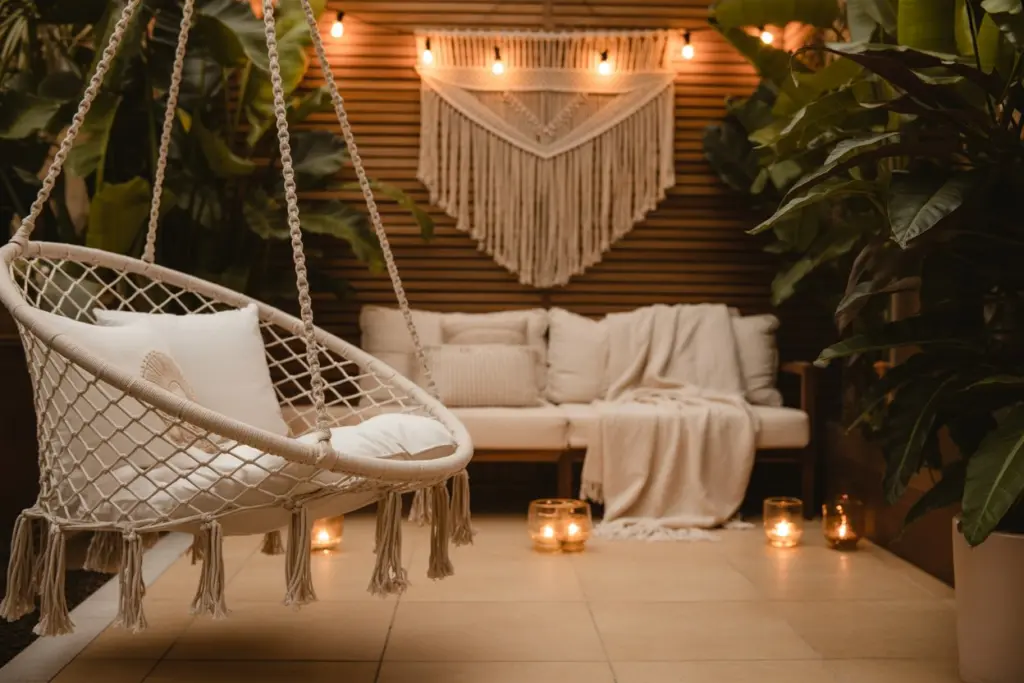
Add color with your leftover paint
To add a touch of originality to your patio design, reuse your leftover paint to decorate! Dare to use bright colors to paint pots, parts of walls and even furniture. You can even use this opportunity to clean up your paint cans. You can even use patio stain to make sure your items will retain their hue outdoors.
Some ideas:
- Jars
- Shelves
- Furniture: chairs, stools, small table
Whether it’s for a small balcony or a huge patio, it’s possible to make small changes that will make a big difference to the design.
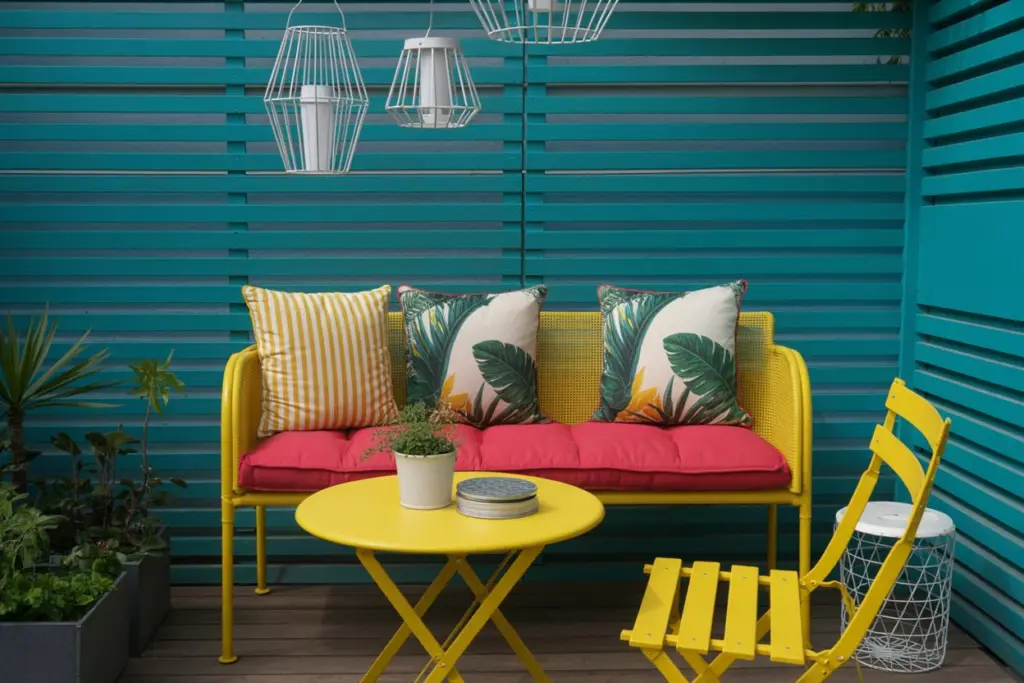
These mistakes should be avoided if you want to have a beautiful patio
Let’s finally talk about the mistakes to avoid while designing your dreamy patio.
Choosing the wrong furniture for the surface
Depending on the shape of your patio, think about choosing furniture that will perfectly fit the different boundaries.
Overcrowding the space
A backyard, whatever its size, must be comfortable. Opt for adequate furniture but avoid cluttering the space with oversized armchairs or an outdoor sofa.
Leaving the walls empty
To bring charm and conviviality, do not hesitate to decorate the walls.
Forget the vegetable touch
To hide from the others or to add cachet to your exterior, plants are a real added value, so don’t neglect them!
Do not take into consideration the shading
Depending on the exposure, the sun, and the furniture, it is important to pay attention to the shading by opting for a parasol, an arbour or a pergola.
Underestimating the lighting
If you want to enjoy your long summer evenings, choose the right lighting, such as spotlights, LEDs or even lanterns.
Neglecting furniture and decoration
Your exterior should be as pampered as your interior.
Fall for a theme
Because trends evolve as they go along, opt for timeless furniture so you don’t have to change it every year.
Forget about storage
Think of saving a few square meters and store your garden accessories with well thought-out storage.
Choosing non-hard-wearing furniture
Your outdoor patio is often subject to changes in temperature and weather. Rain, wind, snow are all aspects to take into account when choosing your patio furniture. It must be strong and resistant enough.
Do not protect yourself from the opposite
Protect your privacy by installing a privacy screen or a curtain so that you are not disturbed by outside eyes. A solution as practical as it is aesthetic!
Do not exploit the walls
Walls should be decorated but also used to save space. So, think about hanging shelves on them for example!
Don’t think about comfort
To enjoy your patio or balcony, comfort is essential. So, opt for a comfortable sofa, soft cushions, soft plaids…
Neglecting the shade sail
To protect yourself from the sun, don’t forget to install a shade sail on your outdoor patio.
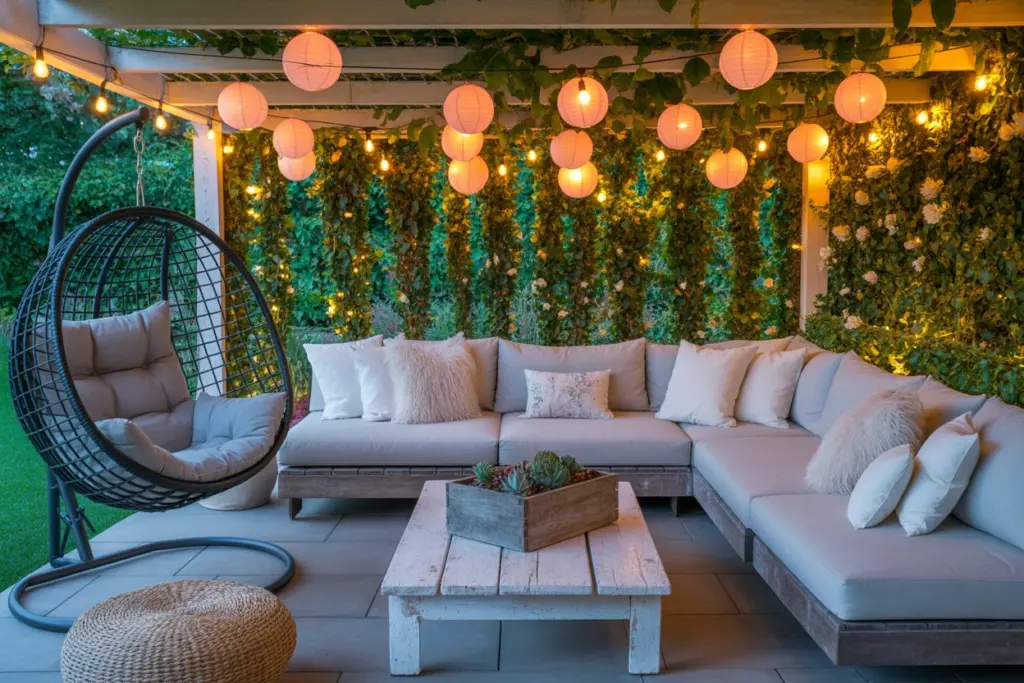
An exterior is as precious as any other room in the house. So to feel good about it, you have to pamper it and take care of it. I hope we have succeeded in inspiring you and helping you make your patio your favorite place for your nights with family and friends.


